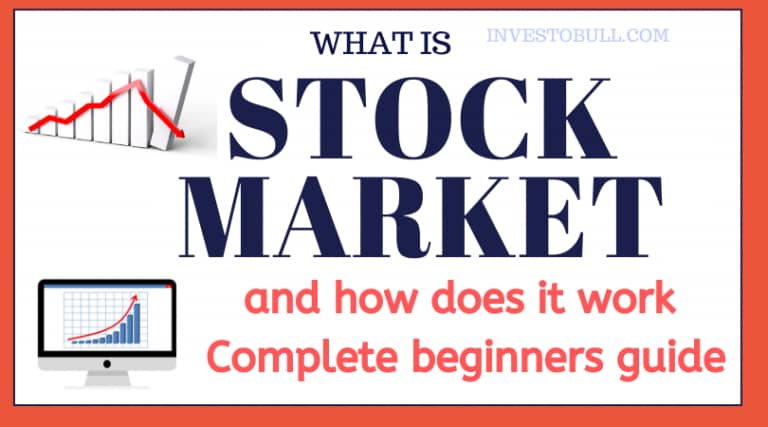Investing in the stock market is one of the most powerful ways to build wealth over time. But success doesn’t come from luck or quick wins. Instead, it comes from a clear strategy, patience, and smart decision-making. The stock market can be unpredictable in the short term, but history shows that over long periods, it tends to grow. For example, the S&P 500 index, which tracks 500 large US companies, has returned an average of about 10% per year over the last century. This includes all the ups and downs, crashes, and recoveries. That’s why long-term investing is often the best approach for most people.
Warren Buffett, one of the world’s most successful investors, once said, *“The stock market is a device for transferring money from the impatient to the patient.”* This quote perfectly sums up the mindset needed to succeed in investing. So, how can you become a patient investor and make your money grow steadily over years or decades? Let’s explore eight essential tips that every long-term investor should know.
—
Why Long-Term Investing Works
Before diving into specific tips, it’s important to understand why long-term investing works so well. The stock market is often volatile. Prices go up and down daily, sometimes wildly. This can be scary and confusing, especially for new investors. But if you look beyond the short-term noise, you’ll see a clear upward trend over many years.
One reason for this growth is compounding. Compounding means your investments earn returns, and then those returns earn returns themselves. Over time, this snowball effect can turn small amounts of money into large sums. Albert Einstein reportedly called compound interest the “eighth wonder of the world” because of its power.
Another reason is that companies tend to grow their earnings and value over time. When you invest in stocks, you essentially own a piece of those companies. As they grow, so does your investment. Dividends, which are portions of profits paid to shareholders, add to this growth.
Research from Vanguard, a leading investment company, shows that investors who stay fully invested in the market for 20 years have historically earned strong returns, while those who try to time the market often miss the best days and lose out. Missing just a handful of the market’s best days can drastically reduce your overall returns.

—
1. Have a Clear Investment Plan
The first step to successful long-term investing is having a clear plan. This means knowing your financial goals, your timeline, and how much risk you’re willing to take. Without a plan, it’s easy to get distracted by market news or make emotional decisions.
Your goals could be saving for retirement, buying a home, funding education, or simply growing your wealth. Each goal might have a different time horizon. For example, retirement might be 20 or 30 years away, while buying a house could be 5 years away.
Knowing your timeline helps determine your risk tolerance. Generally, longer timelines allow you to take more risk because you have time to recover from market downturns. Shorter timelines usually call for safer investments.
A good investment plan includes:
- Setting clear goals: What are you saving for and when?
- Determining risk tolerance: How much ups and downs can you handle?
- Choosing an asset allocation: How much to invest in stocks, bonds, and other assets.
- Regular contributions: How much money you will invest regularly.
- Review schedule: How often you will check and adjust your portfolio.
Experts agree that writing down your plan and reviewing it regularly helps keep you focused and prevents impulsive decisions. According to a study by Dalbar, investors who stick to a plan tend to outperform those who react emotionally by buying high and selling low.
—
2. Diversify Your Portfolio
Diversification is one of the most important concepts in investing. It means spreading your investments across different types of assets, industries, and geographic regions. The goal is to reduce risk by not putting all your money in one place.
Why is diversification important? Because different investments behave differently under various economic conditions. For example, when technology stocks fall, utility stocks might stay stable or even rise. By owning a mix, you reduce the chance that a single event will wipe out your entire portfolio.
Diversification can be achieved by:
– Investing in different sectors (technology, healthcare, finance, consumer goods, etc.)
– Including companies of various sizes (large-cap, mid-cap, small-cap)
– Adding international stocks to gain exposure outside your home country
– Including other asset classes like bonds, real estate, or commodities
Research shows that diversified portfolios experience less volatility and smoother returns over time. The famous Modern Portfolio Theory, developed by Harry Markowitz, mathematically proves that diversification reduces risk without sacrificing expected returns.
For most individual investors, buying diversified index funds or exchange-traded funds (ETFs) is an easy and cost-effective way to achieve diversification.
—
3. Choose Quality Stocks with Strong Fundamentals
Not all stocks are created equal. For long-term investing, it’s crucial to focus on quality companies with strong financial health. These companies tend to be more stable, grow steadily, and survive economic downturns.
Key characteristics of quality stocks include:
- Consistent earnings growth: Companies that steadily increase profits over time
- Strong balance sheets: Low debt levels and healthy cash flow
- Competitive advantages: Unique products, strong brands, or market leadership
- Good management: Experienced leaders with a clear vision and track record
- Reasonable valuation: Stocks that are fairly priced relative to their earnings and growth potential
Peter Lynch, a legendary fund manager, advised investors to understand what they own and why. He believed in investing in companies with simple, understandable business models and strong growth prospects.
Financial websites and tools like Morningstar or Yahoo Finance provide data on company fundamentals, making it easier for individual investors to research stocks.
—
4. Use Dollar-Cost Averaging
Dollar-cost averaging (DCA) is a simple but powerful strategy. Instead of investing a lump sum all at once, you invest a fixed amount of money at regular intervals, such as monthly or quarterly. This approach helps reduce the risk of investing a large amount at the wrong time.
When prices are high, your fixed amount buys fewer shares; when prices are low, it buys more. Over time, this can lower your average cost per share and reduce the impact of market volatility.
DCA also encourages disciplined investing by making it a habit. Many employers offer automatic contributions to retirement accounts, which is a form of dollar-cost averaging.
Studies show that dollar-cost averaging can improve long-term returns and reduce stress for investors who might otherwise worry about market timing.
—
5. Reinvest Dividends
Dividends are payments companies make to shareholders from their profits. Many well-established companies pay regular dividends, which can provide a steady income stream.
Reinvesting dividends means using those payments to buy more shares instead of taking the cash. This practice takes advantage of compounding, where your investment grows not just from price appreciation but also from reinvested dividends earning returns.
Historical data shows that reinvesting dividends has significantly boosted total returns. For example, the total return of the S&P 500 with dividends reinvested has been roughly double the return without reinvestment over the long term.
Many brokerage accounts offer automatic dividend reinvestment plans (DRIPs), making it easy to grow your portfolio without extra effort.
—
6. Avoid Emotional Trading
One of the biggest challenges for investors is managing emotions. Fear and greed often drive poor decisions, such as selling during market crashes or chasing hot stocks during bubbles.
Emotional trading can lead to buying high and selling low, which destroys wealth. Instead, successful investors develop discipline and stick to their plans regardless of market noise.
John Bogle, founder of Vanguard, warned that the investor’s worst enemy is often themselves. He advised focusing on long-term goals and ignoring short-term market swings.
To avoid emotional trading:
– Set realistic expectations about market volatility
– Use your investment plan as a guide
– Avoid checking your portfolio too frequently
– Seek advice from trusted financial professionals if needed
—
7. Review Your Portfolio Periodically
While long-term investing means holding investments for years, it doesn’t mean “set and forget.” It’s important to review your portfolio regularly to ensure it still matches your goals and risk tolerance.
Market movements can change your asset allocation. For example, if stocks perform well, they might make up a larger percentage of your portfolio than planned, increasing risk. Rebalancing means selling some of the outperforming assets and buying underperforming ones to restore your target allocation.
Experts recommend reviewing your portfolio at least once a year, but not more than twice a year to avoid excessive trading costs.
During reviews, consider:
– Changes in your financial goals or timeline
– Performance of individual investments
– Tax implications of buying or selling
– Adjusting your plan if your risk tolerance changes
—
8. Know When to Sell
Knowing when to sell is as important as knowing what to buy. Holding onto losing investments hoping they will recover can lead to bigger losses. Conversely, selling winners too early can limit your gains.
Sell when:
– The company’s fundamentals deteriorate significantly
– The stock no longer fits your investment goals or risk profile
– You need to rebalance your portfolio
– You want to take profits after significant gains
Avoid selling based on short-term market noise or panic. Instead, make decisions based on careful analysis and your investment plan.
—
Frequently Asked Questions (FAQs)
Q1. How long should I hold stocks for long-term investing?
A: Ideally, hold stocks for at least 5 to 10 years or more. The longer you stay invested, the more you benefit from compounding and market growth.
Q2. What is the best way to start investing?
A: Begin with a clear plan, diversify your portfolio, and invest regularly using dollar-cost averaging.
Q3. Should I sell during a market crash?
A: No. Selling during downturns locks in losses. Staying invested usually leads to recovery and growth over time.
Q4. How much should I invest regularly?
A: Invest what you can afford consistently. Even small amounts add up over time.
Q5. Is it better to pick individual stocks or invest in funds?
A: For most investors, diversified index funds or ETFs are safer and easier than picking individual stocks.
—
Long-term investing is not about quick wins or guessing the market’s next move. It is about steady, informed decisions that build wealth over time. By having a clear plan, diversifying, choosing quality stocks, using dollar-cost averaging, reinvesting dividends, avoiding emotional trading, reviewing your portfolio, and knowing when to sell, you put yourself on the path to financial success.
The market rewards patience and discipline. Are you ready to start your journey as a long-term investor and let time work in your favor?
—
References and Further Reading
– [Vanguard Research on Long-Term Investing](https://investor.vanguard.com/investing/why-invest-long-term)
– [S&P 500 Historical Returns](https://www.spglobal.com/spdji/en/indices/equity/sp-500/)
– [John Bogle’s Investment Advice](https://www.bogleheads.org/wiki/John_Bogle)
– [Modern Portfolio Theory Overview](https://www.cfainstitute.org/en/research/foundation/2017/modern-portfolio-theory)
– [Morningstar Stock Analysis](https://www.morningstar.com/)
—










np2gj9